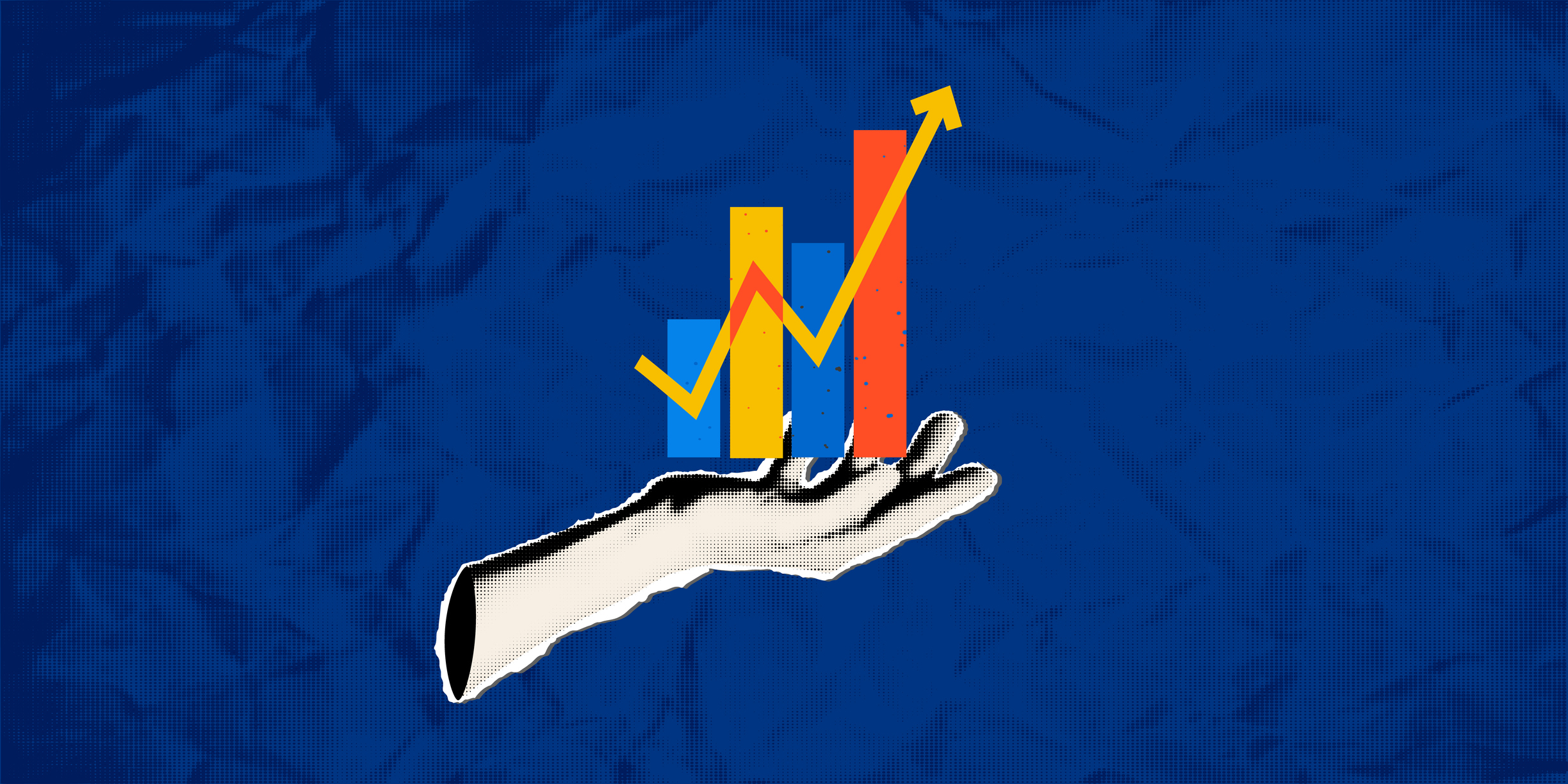Reasons for investors to be cheerful
Markets are betting on a V-shaped recovery – and recent data suggests that they may be right.


The two biggest uncertainties facing investors are when we will have an effective vaccine or treatment for Covid-19 and whether the economic recovery will be V-shaped or resemble some other increasingly contorted letter of the alphabet. Although these questions are obviously related, they are not entirely the same. The world will not get back to normal until the coronavirus is no longer a major problem, either because we’ve solved it medically or because enough people have caught it and got over it. But the scale of the economic shutdown that we’ve seen in the last few months is so great that unless activity snaps back as far as it can in the meantime, we risk a vicious cycle of business failures and rising unemployment that condemns us to many years of economic struggle even if vaccines, treatments or acquired immunity arrive relatively soon.
So while stockmarkets are justifiably taking the view that a year or two of lost profits has little impact on the long-term fundamental value of companies, they are still implicitly betting that the wider economy rebounds as much as possible. Anything that is not V-shaped at first means greater medium-term risks, not just a slower recovery. Hence watching the short-term economic data is a lot more important now than it would usually be.
Ignore GDP, watch consumers
That doesn’t mean fretting over GDP numbers. First, these don’t arrive in time to be useful. The Office for National Statistics will release its UK GDP estimate for April to June on 12 August – more than one month after the end of the quarter. Second, we already know what it will show – a gigantic recession. The actual magnitude is irrelevant. What matters is what’s going on right now – that means looking at more timely leading economic indicators (see below).
MoneyWeek
Subscribe to MoneyWeek today and get your first six magazine issues absolutely FREE

Sign up to Money Morning
Don't miss the latest investment and personal finances news, market analysis, plus money-saving tips with our free twice-daily newsletter
Don't miss the latest investment and personal finances news, market analysis, plus money-saving tips with our free twice-daily newsletter
So far, these look modestly encouraging. UK retail sales were nearly back to pre-lockdown levels in June. Restaurant and pub trade seemed to be at around 70% of the pre-Covid-19 level by mid-July, which is a reasonable start given that the government has spent months trying to terrify people into staying in their homes. New car sales were weak in June, but it seems buyers may have held back in the hope of a government incentive scheme. The picture appears broadly similar elsewhere: the OECD composite leading indicators show activity starting to bounce back globally in June. Unemployment remains very high and job vacancies low, but hiring and firing always lags the cycle. In short, uncertainty is high, but if you’re an optimist, a V certainly looks possible.
I wish I knew what economic indicators were, but I’m too embarrassed to ask
An economic indicator is any statistic that allows us to analyse how the economy is performing or is likely to perform in future. Indicators are often used for monitoring the business cycle – ie, the shorter-term shifts in economic growth around its long-term trend caused by periods of boom (in which the economy is expanding) and recession (in which it is contracting).
A single business cycle is a period of time that includes a boom followed a recession. Identifying the point when the boom is turning to bust should be extremely useful for investors – but this is very difficult to do consistently.
Indicators are classified in three main ways. They may be procyclical (increase or decrease in line with the wider economy), countercyclical (move in the opposite direction to the economy) or acyclical (no consistent relationship with the direction of the economy). Those that are correlated with the economy may be leading, coincident or lagging, depending on whether they usually change before, during or after the business cycle.
The most important for an investor’s purpose are leading indicators. No leading indicator has a perfect record and the most useful ones vary between countries due to differences in the structure of the economy and to what data is gathered. However, data such as new manufacturing orders, new housing starts, retail sales and car sales are often helpful. A composite leading indicator (CLI), such as those compiled by the OECD, tries to combine several leading indicators into a single index that has more consistent predictive power than any one individual indicator.
Job-related data – such as unemployment and wages – are mostly lagging indicators, despite analysts often citing them as evidence that a boom is still robust. That’s because employers tend not to fire workers until a recession is well under way or hire new ones until the recovery is evident.
Get the latest financial news, insights and expert analysis from our award-winning MoneyWeek team, to help you understand what really matters when it comes to your finances.
Cris Sholto Heaton is an investment analyst and writer who has been contributing to MoneyWeek since 2006 and was managing editor of the magazine between 2016 and 2018. He is especially interested in international investing, believing many investors still focus too much on their home markets and that it pays to take advantage of all the opportunities the world offers. He often writes about Asian equities, international income and global asset allocation.
Cris began his career in financial services consultancy at PwC and Lane Clark & Peacock, before an abrupt change of direction into oil, gas and energy at Petroleum Economist and Platts and subsequently into investment research and writing. In addition to his articles for MoneyWeek, he also works with a number of asset managers, consultancies and financial information providers.
He holds the Chartered Financial Analyst designation and the Investment Management Certificate, as well as degrees in finance and mathematics. He has also studied acting, film-making and photography, and strongly suspects that an awareness of what makes a compelling story is just as important for understanding markets as any amount of qualifications.
-
 Football fans issued warning over ticket scams ahead of 2026 World Cup
Football fans issued warning over ticket scams ahead of 2026 World CupSantander customers lost more to football scams in the first six months of 2025 compared to the same period in 2024, when total losses surged due to the Euros
-
 Nationwide fined £44 million over “inadequate” anti-money laundering systems
Nationwide fined £44 million over “inadequate” anti-money laundering systemsFailings in Nationwide’s financial crime processes between October 2016 to July 2021 meant one criminal was able to deposit £26 million from fraudulent Covid furlough payments in just eight days.
-
 Who is Christopher Harborne, crypto billionaire and Reform UK’s new mega-donor?
Who is Christopher Harborne, crypto billionaire and Reform UK’s new mega-donor?Christopher Harborne came into the spotlight when it emerged he had given £9 million to Nigel Farage's Reform UK. How did he make his millions?
-
 The best Christmas gifts for your loved ones
The best Christmas gifts for your loved onesWe round up the best Christmas gifts with a touch of luxury to delight, surprise and amaze family and friends this festive season
-
 Leading European companies offer long-term growth prospects
Leading European companies offer long-term growth prospectsOpinion Alexander Darwall, lead portfolio manager, European Opportunities Trust, picks three European companies where he'd put his money
-
 How to harness the power of dividends
How to harness the power of dividendsDividends went out of style in the pandemic. It’s great to see them back, says Rupert Hargreaves
-
 Why Trustpilot is a stock to watch for exposure to the e-commerce market
Why Trustpilot is a stock to watch for exposure to the e-commerce marketTrustpilot has built a defensible position in one of the most critical areas of the internet: the infrastructure of trust, says Jamie Ward
-
 Tetragon Financial: An exotic investment trust producing stellar returns
Tetragon Financial: An exotic investment trust producing stellar returnsTetragon Financial has performed very well, but it won't appeal to most investors – there are clear reasons for the huge discount, says Rupert Hargreaves
-
 How to capitalise on the pessimism around Britain's stock market
How to capitalise on the pessimism around Britain's stock marketOpinion There was little in the Budget to prop up Britain's stock market, but opportunities are hiding in plain sight. Investors should take advantage while they can
-
 London claims victory in the Brexit wars
London claims victory in the Brexit warsOpinion JPMorgan Chase's decision to build a new headquarters in London is a huge vote of confidence and a sign that the City will remain Europe's key financial hub
